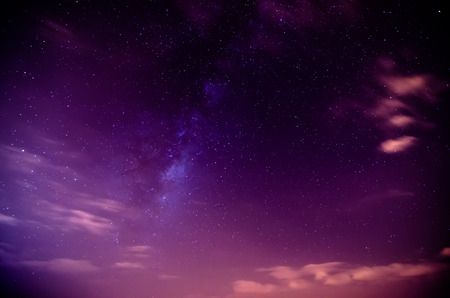1. Understanding the Lunar Phases: Science Meets Myth
The Moon has fascinated humanity for thousands of years, lighting up our night skies and inspiring stories, rituals, and even modern wellness trends. In today’s world, especially in American culture, manifesting with the Moon blends astronomical science with spiritual tradition. Let’s explore how science explains the Moon’s phases and how myths and traditions have shaped our connection to its cycles.
The Science Behind the Moon’s Phases
At its core, the cycle of the Moon is a result of its orbit around Earth. As the Moon moves, the sunlight it reflects changes, creating different “phases” we see from Earth. These phases repeat every 29.5 days, known as a lunar month.
| Lunar Phase | What You See | Scientific Explanation |
|---|---|---|
| New Moon | Moon is invisible or barely visible | The side facing Earth is not lit by the Sun |
| First Quarter | Right half of the Moon is lit | We see half the sunlit side as the Moon moves in its orbit |
| Full Moon | Entire face is illuminated | The Sun, Earth, and Moon are aligned; Earth sees the full sunlit side |
| Last Quarter | Left half of the Moon is lit | The opposite half is visible compared to First Quarter |
Lunar Lore: Myths and Traditions in American Culture
While science tells us why the phases happen, cultures across America—from Native American tribes to modern urban communities—have layered their own meanings onto each phase. Many Native American tribes named each Full Moon based on seasonal events (like the Wolf Moon or Harvest Moon). Early settlers used these names for planting and harvesting schedules. Today, many Americans blend these old customs with new spiritual practices like moon manifesting ceremonies.
Traditional Meanings of Lunar Phases in American Culture
| Lunar Phase | Cultural Meaning/Tradition |
|---|---|
| New Moon | A time for setting intentions or starting fresh projects (common in moon manifesting circles) |
| First Quarter | A phase for taking action and overcoming obstacles—often linked to personal growth workshops or goal-setting sessions |
| Full Moon | A period believed to amplify energy; used for celebrations or “releasing” what no longer serves you (seen in both indigenous ceremonies and modern moon circles) |
| Last Quarter | A time for reflection and letting go—popular in mindfulness practices and journaling prompts inspired by moon cycles |
The Foundation for Modern Manifesting Practices
The blend of scientific knowledge and rich mythological background sets the stage for today’s moon manifesting practices in America. People use both astronomy and tradition to find meaning and direction, weaving together logic and spirituality as they harness the power of lunar cycles.
2. The Moon’s Psychological and Emotional Influence
Understanding the Moon’s Subtle Power Over Our Minds
Throughout history, the Moon has been associated with changes in mood and behavior. In today’s world, many Americans still feel a deep connection to lunar cycles—even if they don’t always realize it. While some of this connection is rooted in spiritual tradition, modern science also explores how the phases of the Moon might influence our psychology and emotions.
How Lunar Cycles Affect Mood and Behavior
The idea that the Moon impacts our feelings isn’t just folklore. Scientific studies have explored whether full moons really do trigger changes in sleep patterns, anxiety levels, or even creativity. For example, a study published in the journal “Current Biology” found that people may sleep less and experience lower-quality rest during a full moon. This could explain why some people feel more energized or restless during certain lunar phases.
Lunar Phases & Their Potential Effects
| Lunar Phase | Common Emotional Experiences | Possible Psychological Effects |
|---|---|---|
| New Moon | Introspection, new beginnings, quiet energy | Good time for reflection and setting intentions |
| Waxing Crescent/First Quarter | Hopeful, motivated, building momentum | Increased drive to start new projects or habits |
| Full Moon | Heightened emotions, restlessness, creativity | Poorer sleep, increased energy or tension |
| Waning Gibbous/Last Quarter | Release, relief, gratitude, winding down | Easier to let go of stress or old habits |
| Dark Moon | Low energy, need for rest and renewal | A time for self-care and recuperation |
Contemporary American Perspectives on the Moon’s Influence
In American culture today, interest in astrology and lunar manifesting is growing alongside scientific curiosity. Many people track the lunar calendar as part of their wellness routines—using full moons for group meditations or new moons to set personal goals. Some therapists even encourage clients to pay attention to lunar cycles when managing mood swings or making big decisions.
This blend of tradition and modern thought allows us to honor both science and spirituality. Whether you believe the Moon truly shifts your emotions or simply enjoy the ritual of following its phases, tuning into its rhythms can be an empowering way to connect with yourself—and maybe even manifest positive change.

3. Manifestation Rituals: From Ancestral Roots to Modern America
Ancient Practices: Honoring the Moon Across Cultures
For thousands of years, people all over the world have looked to the moon for guidance, healing, and connection. Ancient civilizations like the Egyptians, Greeks, and Native American tribes used lunar cycles to mark time, plant crops, and perform sacred rituals. These moon rituals were deeply spiritual, often involving group gatherings, prayers, chants, or offerings under the light of the full or new moon.
Examples of Traditional Moon Rituals
| Civilization/Tribe | Traditional Practice |
|---|---|
| Ancient Egypt | Lunar festivals honoring Isis; moon phase tracking for agriculture |
| Greek/Roman | Celebrating Artemis/Diana with dances and offerings during full moons |
| Native American (various) | Full Moon ceremonies for gratitude, healing, or vision quests |
| Chinese | Mid-Autumn Festival with mooncakes and lanterns for family unity and abundance |
The Shift to New Age Spirituality in America
In recent decades, Americans have blended these ancestral traditions with New Age beliefs and personal development ideas. The focus has shifted from community-based rituals to more individual practices. People now see the moon not only as a spiritual symbol but also as a tool for self-reflection and intention-setting. This transformation reflects Americas love for both tradition and innovation.
Popular Modern Moon Rituals in America
| Moon Phase | Common Rituals Today | Main Purpose |
|---|---|---|
| New Moon | Journaling intentions, vision boards, meditation circles | Setting goals and planting “seeds” for new beginnings |
| Waxing Moon | Affirmations, daily gratitude lists, creative projects | Building momentum toward dreams and desires |
| Full Moon | Cleansing crystals, releasing ceremonies, moon baths | Letting go of what no longer serves you; celebrating progress |
| Waning Moon | Simplifying routines, forgiveness exercises, rest rituals | Cleansing and preparing space for new cycles ahead |
Personalizing Lunar Rituals: The American Way
Todays Americans often make lunar manifestation their own by mixing traditional wisdom with modern psychology and lifestyle needs. Some host moon circles with friends in their living rooms or backyards; others combine astrology apps with mindfulness techniques or pair ritual candles with Spotify playlists. The key is flexibility—people are encouraged to trust their instincts and create routines that feel meaningful in their everyday life.
Simple Steps to Start Your Own Moon Manifestation Ritual at Home:
- PICK YOUR PHASE: Choose a moon phase that matches your intention (new moon for starting fresh; full moon for letting go).
- SET THE SCENE: Light a candle or incense, play calming music, and find a quiet space.
- WRITE IT OUT: Journal about your goals or what you want to release. Be honest and specific!
- SAY IT LOUD: Speak your intentions or affirmations out loud—this helps them feel real.
- CLOSE WITH GRATITUDE: Thank the moon (and yourself) for this moment of reflection.
This blend of ancient roots and modern spirit is what makes manifesting with the moon so special in America today—it’s about honoring tradition while making it your own.
4. Integrating Science and Spirituality for Effective Manifestation
Finding Balance Between Science and Spirituality
In the world of lunar manifestation, many people feel they have to choose between science and spirituality. But actually, the most powerful results often come from blending both perspectives. While science gives us a framework for understanding how natural cycles (like the moon phases) can affect our mood, energy, and sleep patterns, spirituality adds meaning and intention to our actions. By honoring both sides, we can make our manifestation practice more grounded, meaningful, and effective.
Debunking Common Misconceptions
| Misconception | Scientific Insight | Spiritual Perspective |
|---|---|---|
| You need to believe in magic for manifestation to work. | Our brains are wired to respond to intention and visualization, which can create real change over time. | Setting intentions connects us to something bigger than ourselves, whether thats the universe or our higher self. |
| The moon has no effect on humans. | Lunar phases can influence sleep quality, tides, and even animal behavior. Human biology is sensitive to these shifts. | The moon symbolizes transformation and cycles, reminding us of the power of renewal in our own lives. |
| Manifestation is just wishful thinking. | Positive psychology shows that focused thought and repeated action can shift habits and outcomes. | Rituals add purpose and clarity, helping us align with our goals on a deeper level. |
Harnessing Both Worlds: How-To Tips
- Create a Ritual: Pick a moon phase (like the New Moon) and combine scientific tools like journaling or habit tracking with spiritual practices such as meditation or lighting a candle.
- Track Your Progress: Use apps or a simple calendar to log your mood, energy levels, and progress toward your goals throughout the lunar cycle. Reflect on both practical steps taken and any intuitive insights you receive.
- Stay Open-Minded: Remember that you don’t have to pick one side. Allow yourself to enjoy both evidence-based strategies and soulful rituals. This combination makes your practice uniquely yours—and more sustainable in everyday American life.
Lunar Manifestation Checklist for Everyday Life
| Action Step | Science-Based Reason | Spiritual Boost |
|---|---|---|
| Set an intention at New Moon | Mental focus increases chances of follow-through | Aligns your energy with new beginnings |
| Reflect at Full Moon | Self-reflection supports learning and growth | Cultivates gratitude for progress made |
| Release old habits during Waning Moon | Cognitive behavioral techniques support letting go of unhelpful patterns | Surrendering opens space for new opportunities |
| Celebrate small wins each cycle | Celebration reinforces positive change neurologically | Acknowledges your connection to the greater flow of life |
By weaving together scientific knowledge with spiritual practices rooted in lunar tradition, you can create a manifestation routine that feels authentic, empowering, and aligned with modern American values.
5. Practical Steps: Crafting Your Own Moon Manifestation Practice
Creating your own moon manifestation routine is a rewarding way to connect with both science and spirituality. In the U.S., moon rituals have become mainstream, blending ancient wisdom with modern wellness trends. Here’s how you can safely and effectively start your own practice:
Step 1: Choose Your Tools
Start by gathering items that resonate with you. Popular choices among Americans include:
| Tool | Description | Where to Find in the U.S. |
|---|---|---|
| Journal/Notebook | For intentions and reflections | Target, Amazon, local bookstores |
| Scented Candles | For ambiance and focus | Bath & Body Works, Etsy, Walmart |
| Crystals (e.g., moonstone, quartz) | Symbolic energy amplifiers | Crystal shops, metaphysical stores, online retailers |
| Moon Calendar or App | Tracks lunar phases easily | Google Calendar, Timeanddate.com, “The Moon” app |
| Sage/Palo Santo | Cleanses the space energetically | Whole Foods, local markets, spiritual shops |
Step 2: Set Your Intention According to the Lunar Phase
The moon’s cycle offers unique energies for different goals:
| Lunar Phase | Best For |
|---|---|
| New Moon | New beginnings, setting intentions, planting seeds of desire |
| Waxing Crescent/First Quarter | Taking action on goals and building momentum |
| Full Moon | Culmination, gratitude, manifesting results, releasing what no longer serves you |
| Waning Moon/Last Quarter | Cleansing, letting go, reflection and rest |
Step 3: Create Your Ritual Space Safely and Comfortably
- Choose a Quiet Spot: It could be your bedroom corner or balcony. Many in the U.S. love setting up a simple altar on a windowsill facing the moon.
- Avoid Fire Hazards: If you use candles or incense, keep them away from curtains and never leave them unattended.
- Mental Health Check-In: Manifestation should feel empowering. If you feel anxious or overwhelmed, pause and return when ready.
- Kid & Pet Safety: Keep crystals and burning materials out of reach from children and pets.
- Cultural Respect: When using sage or palo santo, remember these are sacred to Indigenous communities; buy ethically sourced products.
Step 4: Engage With Community Spaces & Resources
- Attend Local Gatherings: Many U.S. cities have Full Moon circles at yoga studios or community centers—check Meetup.com or Facebook Events.
- Dive Into Online Communities: Join forums like Reddit’s r/MoonMagic or follow Instagram accounts like @thehoodwitch for support and ideas.
- Librarians Are Friends: Public libraries often offer workshops on astrology and lunar cycles—look up event calendars for free resources!
- Podcasts & Books: Try “The Moon Cycle Podcast” or read “Lunar Abundance” by Ezzie Spencer for further inspiration.
Step 5: Track Your Progress & Stay Flexible
- Reflect Regularly: Note changes in your mood and results after each lunar phase in your journal.
- Evolve Your Practice: What works for others might not work for you. Mix traditional steps with what feels right in your lifestyle.
- Skepticism Is Okay: Many combine scientific curiosity with spiritual openness—find your own balance between both worlds.
This flexible approach helps bridge tradition with modern thought while staying rooted in American cultural resources and safe practices.


